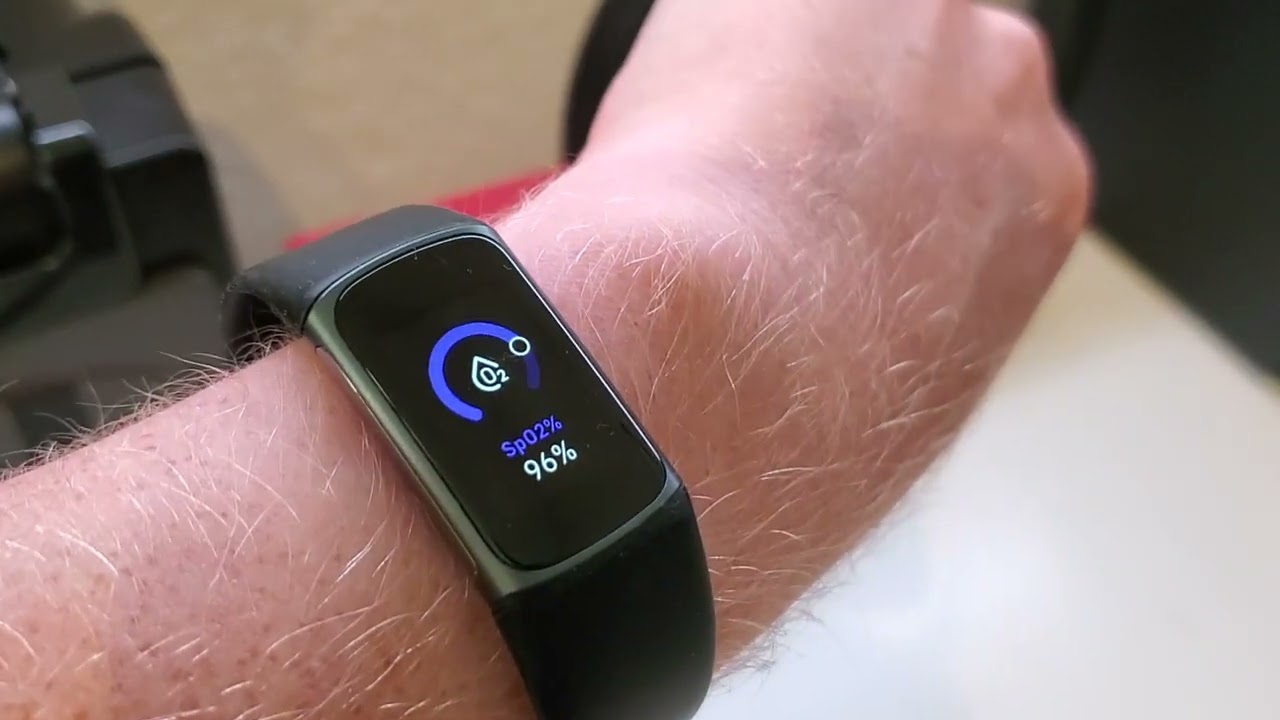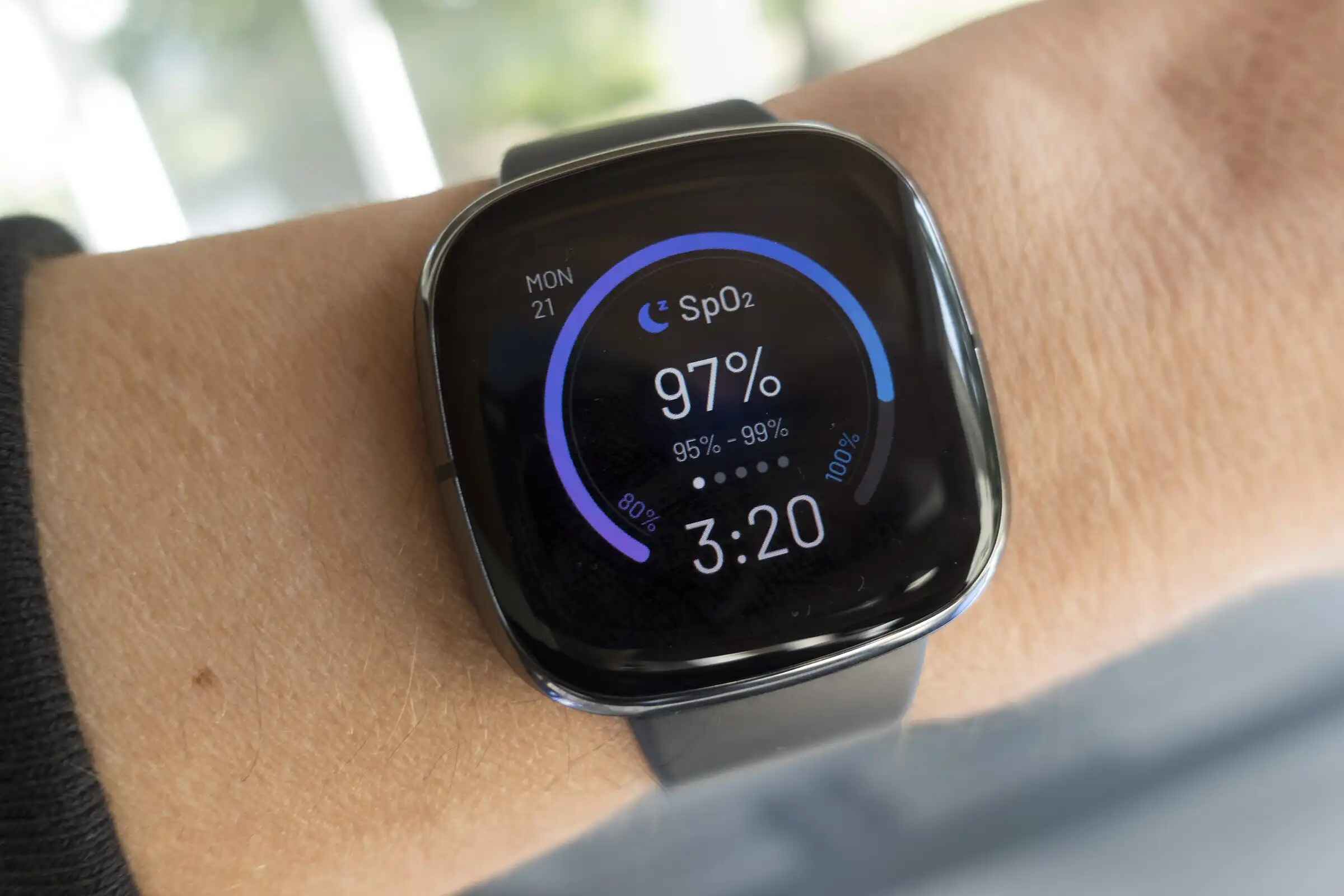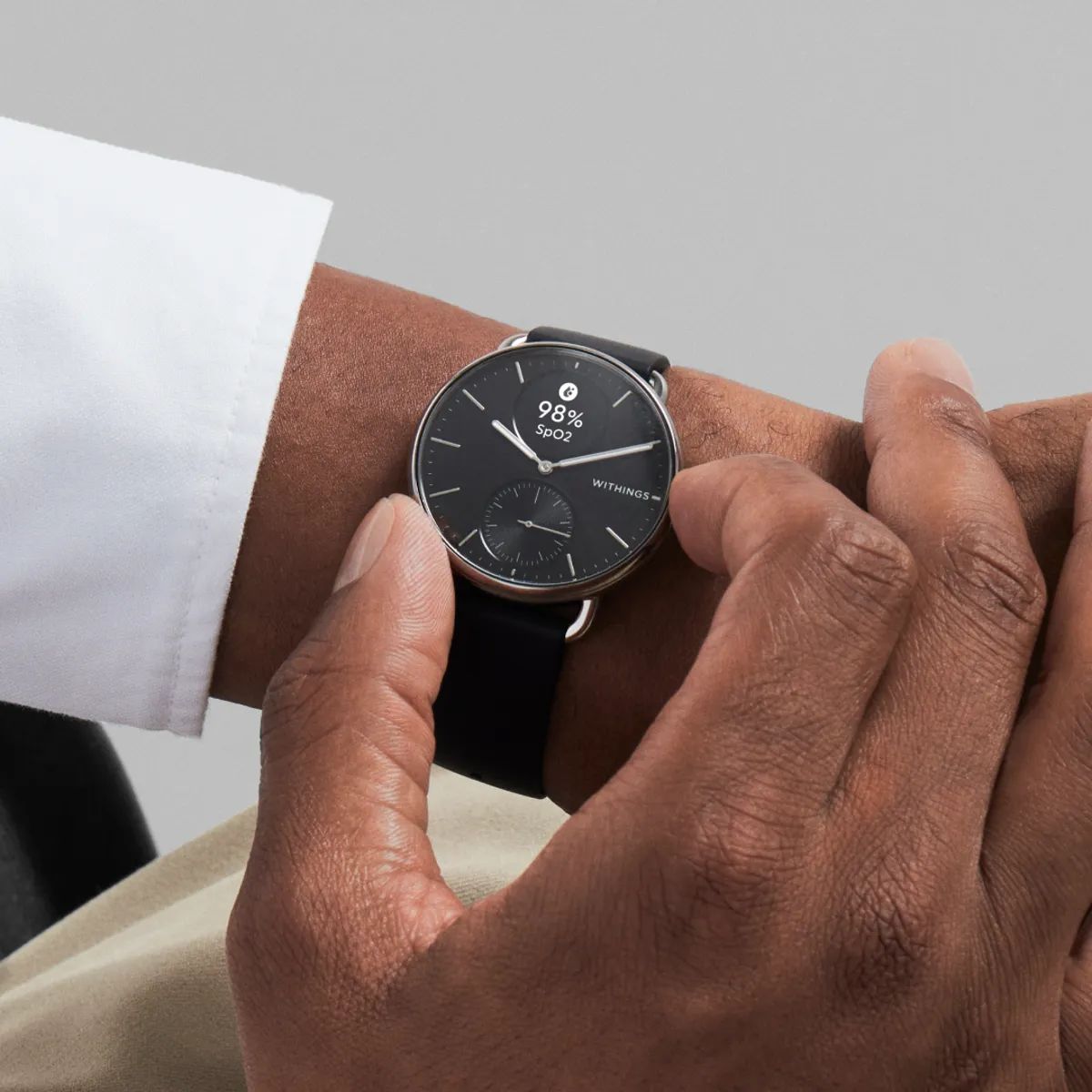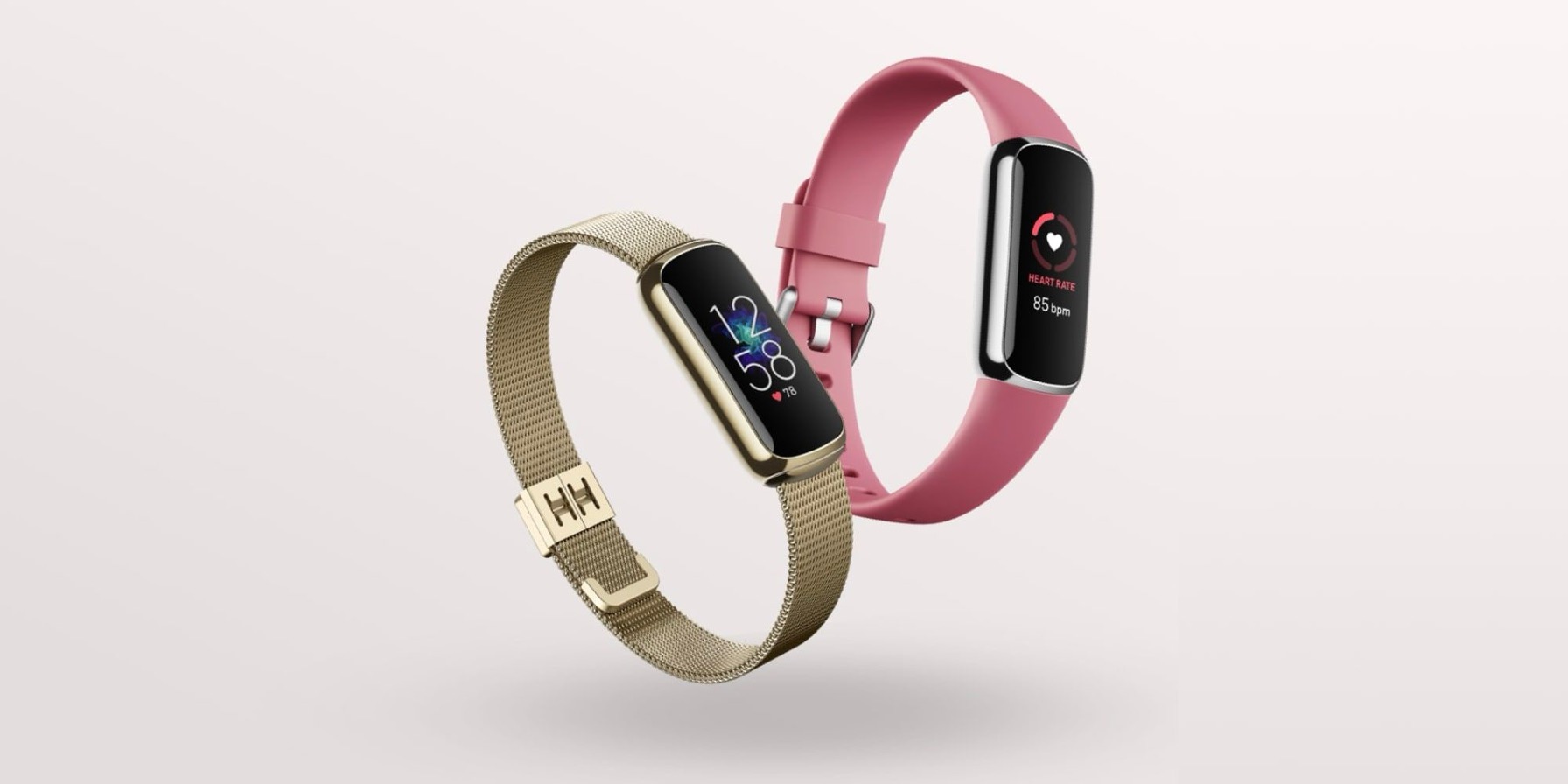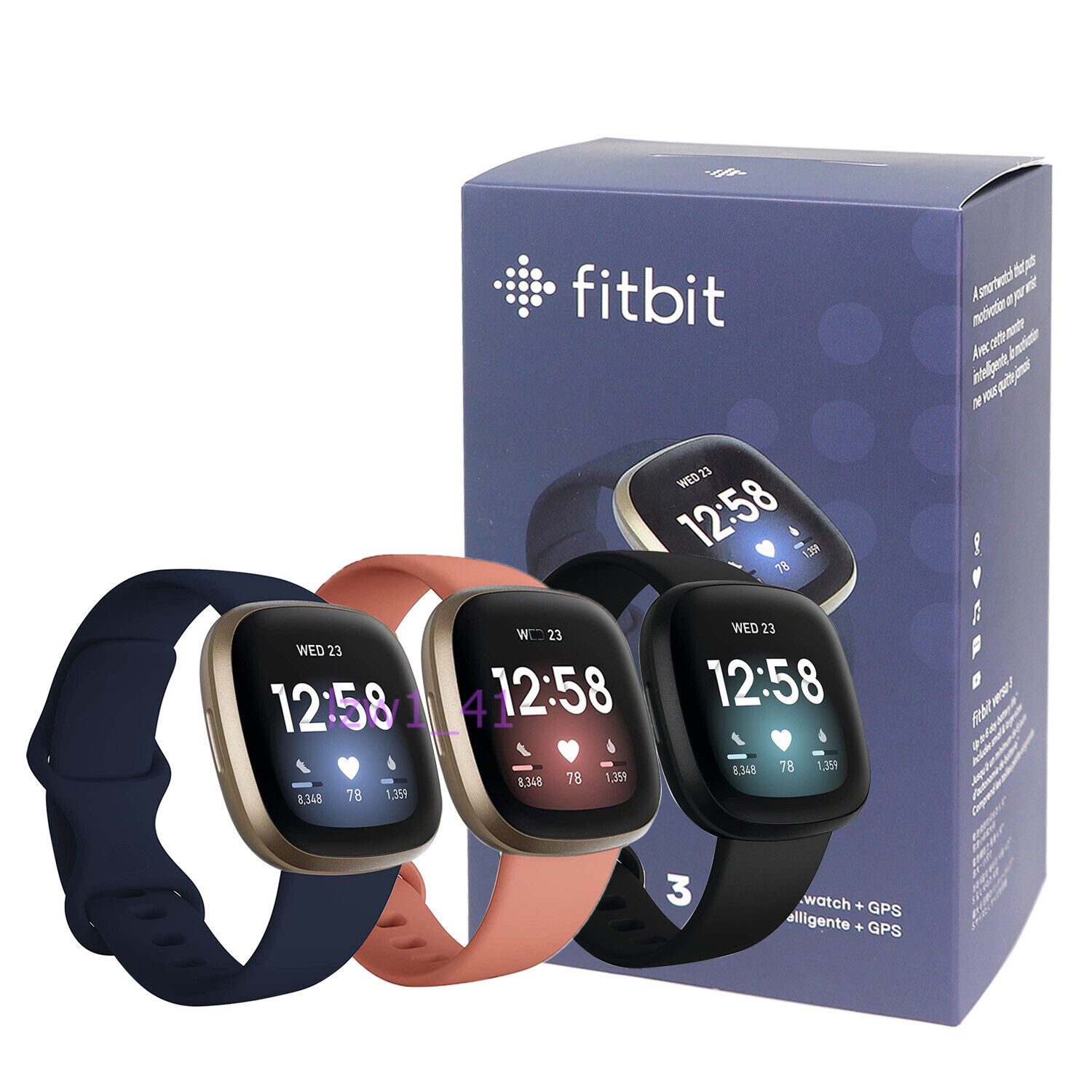Introduction
Welcome to the world of wearables, where technology seamlessly integrates with health and wellness. Among the myriad features offered by wearables, the measurement of blood oxygen saturation, or SpO2, has garnered significant attention. In this comprehensive guide, we will delve into the nuances of using SpO2 on the Fitbit Sense, uncovering its significance in monitoring and optimizing your health.
As wearables continue to evolve, they are no longer confined to simply tracking steps or heart rate. The integration of SpO2 monitoring into devices like the Fitbit Sense marks a pivotal advancement in personal health management. Understanding the role of SpO2 in assessing overall wellness is crucial, and the Fitbit Sense provides a user-friendly platform to harness the power of this vital health metric.
By exploring the intricacies of SpO2 measurement, deciphering the data provided by the Fitbit Sense, and learning how to leverage this information for actionable insights, you will be empowered to take proactive steps towards enhancing your well-being. Let's embark on this enlightening journey to unravel the potential of SpO2 monitoring with the Fitbit Sense.
Understanding SpO2
SpO2, or peripheral capillary oxygen saturation, is a vital physiological parameter that reflects the oxygen saturation level in the blood. This metric is a key indicator of respiratory function and overall oxygen delivery to the body's tissues. Expressed as a percentage, SpO2 represents the amount of oxygen bound to hemoglobin in the blood, specifically in the arteries. The typical range for healthy individuals is 95-100%, signifying that hemoglobin is almost fully saturated with oxygen.
Understanding SpO2 goes beyond a mere numerical value. It provides valuable insights into the efficiency of oxygen transport in the bloodstream. When SpO2 levels deviate from the normal range, it can indicate potential respiratory issues, circulatory problems, or other underlying health concerns. For instance, a lower SpO2 reading may suggest hypoxemia, a condition characterized by low oxygen levels in the blood, which can lead to symptoms like shortness of breath, confusion, and fatigue.
In practical terms, SpO2 monitoring plays a pivotal role in assessing respiratory function during physical activity, sleep, and times of illness. Athletes and fitness enthusiasts utilize SpO2 data to gauge their oxygen saturation levels during workouts, ensuring optimal performance and recovery. Moreover, individuals with respiratory conditions such as asthma or chronic obstructive pulmonary disease (COPD) can benefit from regular SpO2 monitoring to track any fluctuations that may necessitate medical intervention.
The integration of SpO2 measurement into wearable devices like the Fitbit Sense has democratized access to this critical health metric. Users can now conveniently track their SpO2 levels throughout the day, gaining valuable insights into their respiratory well-being. This seamless integration of SpO2 monitoring empowers individuals to proactively manage their health, fostering a deeper understanding of their body's oxygen dynamics.
In essence, comprehending SpO2 is fundamental to optimizing overall health and well-being. By grasping the significance of SpO2 measurements and their implications, individuals can take proactive steps to maintain optimal oxygen levels and address any underlying health issues. The Fitbit Sense, with its advanced SpO2 monitoring capabilities, serves as a valuable tool in this journey towards enhanced health awareness and proactive wellness management.
How Fitbit Sense Measures SpO2
The Fitbit Sense employs advanced technology to measure SpO2, providing users with valuable insights into their blood oxygen saturation levels. This innovative wearable utilizes a combination of hardware and algorithms to accurately capture and analyze SpO2 data, offering a comprehensive view of respiratory well-being.
At its core, the Fitbit Sense leverages a photoplethysmography (PPG) sensor to measure SpO2. This sensor emits light into the skin, primarily through the wrist, and detects the amount of light absorbed by the blood. The PPG sensor captures the variations in light absorption, which are directly influenced by the pulsatile nature of blood flow. By precisely monitoring these fluctuations, the Fitbit Sense can derive SpO2 readings based on the oxygen saturation levels in the blood.
Furthermore, the Fitbit Sense incorporates sophisticated algorithms to process the PPG data and translate it into meaningful SpO2 measurements. These algorithms are designed to account for various factors that can impact the accuracy of SpO2 readings, including motion artifacts and ambient light interference. By meticulously analyzing the PPG signals and applying advanced signal processing techniques, the Fitbit Sense ensures that the SpO2 data presented to users is reliable and reflective of their actual blood oxygen saturation levels.
Moreover, the Fitbit Sense leverages continuous SpO2 monitoring, enabling users to access real-time insights into their oxygen saturation throughout the day and during sleep. This continuous monitoring capability allows for a comprehensive assessment of SpO2 trends, empowering individuals to identify patterns and fluctuations in their blood oxygen levels. By seamlessly integrating SpO2 measurements into the overall health tracking experience, the Fitbit Sense provides a holistic view of respiratory well-being, complementing other vital health metrics such as heart rate and physical activity.
In essence, the Fitbit Sense employs a multifaceted approach to measure SpO2, combining a PPG sensor, advanced algorithms, and continuous monitoring to deliver accurate and actionable insights. This integration of cutting-edge technology enables users to gain a deeper understanding of their respiratory health, fostering proactive engagement with their well-being. By harnessing the capabilities of the Fitbit Sense to measure SpO2, individuals can embark on a journey towards optimized health awareness and informed decision-making.
Interpreting SpO2 Data
Interpreting SpO2 data is pivotal in gaining meaningful insights into one's respiratory well-being and overall health. The SpO2 readings provided by the Fitbit Sense offer valuable information that can be instrumental in understanding oxygen saturation levels and identifying potential health implications.
When reviewing SpO2 data, it is essential to consider the context in which the measurements were taken. For instance, during periods of physical activity or exercise, it is common for SpO2 levels to fluctuate due to increased oxygen demand by the body. In contrast, observing SpO2 trends during rest and sleep can reveal significant information about respiratory function and potential breathing irregularities.
A baseline understanding of typical SpO2 ranges is crucial for accurate interpretation. As mentioned earlier, the normal range for healthy individuals is typically 95-100%. Deviations from this range may warrant closer attention and further assessment. Consistently low SpO2 readings, especially below 90%, could indicate potential respiratory issues or oxygenation problems that require medical evaluation.
Furthermore, observing SpO2 trends over time can unveil patterns and variations in oxygen saturation levels. For instance, individuals may notice fluctuations in SpO2 during specific times of the day or in response to environmental factors. These observations can provide valuable cues about the impact of daily activities, sleep quality, or external conditions on respiratory well-being.
The Fitbit Sense facilitates the visualization of SpO2 data through intuitive graphs and trends, allowing users to track their oxygen saturation levels with ease. By monitoring these trends, individuals can identify any persistent deviations from their baseline SpO2 levels, prompting proactive measures such as consulting healthcare professionals or adjusting lifestyle habits to optimize respiratory health.
In essence, interpreting SpO2 data goes beyond simply acknowledging numerical values; it involves contextualizing the readings within daily activities, understanding typical ranges, and recognizing patterns over time. The Fitbit Sense empowers users to engage with their SpO2 data comprehensively, fostering a proactive approach to respiratory well-being and health management. By leveraging the insights derived from SpO2 measurements, individuals can make informed decisions to support their overall wellness and vitality.
Using SpO2 Data for Health Insights
Harnessing SpO2 data for health insights is a transformative endeavor that empowers individuals to proactively engage with their well-being. The SpO2 measurements provided by the Fitbit Sense serve as a valuable source of information, offering actionable insights into respiratory health and overall vitality.
By leveraging SpO2 data, individuals can gain a deeper understanding of their oxygen saturation levels across various scenarios, providing a window into their respiratory function during rest, physical activity, and sleep. This comprehensive view of SpO2 trends enables users to identify potential irregularities or fluctuations that may warrant further attention. For instance, observing consistently low SpO2 readings during sleep can signify potential breathing disturbances, prompting individuals to explore sleep apnea or other respiratory conditions that may impact overall health.
Moreover, the integration of SpO2 data with other health metrics, such as heart rate and sleep patterns, allows for a holistic assessment of well-being. Users can correlate SpO2 trends with their daily activities, exercise routines, and environmental factors, unveiling valuable connections between oxygen saturation levels and lifestyle influences. This interconnected approach to health insights empowers individuals to make informed decisions, optimize their routines, and seek necessary support to enhance their respiratory well-being.
Furthermore, SpO2 data serves as a proactive tool for health monitoring, enabling users to detect potential warning signs and take preemptive measures to address any deviations from normal oxygen saturation levels. By recognizing patterns in SpO2 readings and identifying outliers, individuals can initiate conversations with healthcare professionals, paving the way for early intervention and personalized health management strategies.
The utilization of SpO2 data for health insights extends beyond passive monitoring; it fosters a proactive and informed approach to well-being. By embracing the wealth of information provided by SpO2 measurements, individuals can embark on a journey towards optimized respiratory health, empowered by actionable insights and a deeper understanding of their body's oxygen dynamics.
In essence, leveraging SpO2 data for health insights with the Fitbit Sense transcends mere data interpretation; it embodies a proactive commitment to holistic health management, informed decision-making, and personalized well-being optimization. By embracing this approach, individuals can embark on a transformative path towards enhanced vitality and respiratory wellness.
Tips for Using SpO2 on Fitbit Sense
-
Understand Your Baseline: Take the time to establish your baseline SpO2 levels during different activities and times of the day. By understanding your typical oxygen saturation ranges, you can readily identify deviations that may warrant further attention.
-
Consistent Monitoring: Embrace the continuous SpO2 monitoring feature of the Fitbit Sense. Regularly tracking your SpO2 levels throughout the day and during sleep provides a comprehensive view of your respiratory well-being, allowing you to identify trends and patterns.
-
Contextualize Readings: When reviewing SpO2 data, consider the context in which the measurements were taken. Recognize that oxygen saturation levels may naturally fluctuate during physical activity, sleep, or exposure to environmental factors. Contextualizing your readings enhances the accuracy of your health insights.
-
Correlate with Lifestyle Factors: Explore correlations between your SpO2 trends and lifestyle factors such as exercise, stress levels, and sleep quality. Identifying connections between your daily activities and oxygen saturation levels can guide you in optimizing your routines for improved respiratory health.
-
Seek Professional Guidance: If you notice persistent deviations or irregularities in your SpO2 readings, consider consulting healthcare professionals. Discussing your SpO2 data with medical experts can lead to personalized insights and proactive measures to support your respiratory well-being.
-
Integration with Overall Health Tracking: Integrate SpO2 data with other health metrics provided by the Fitbit Sense, such as heart rate and sleep patterns. This holistic approach enables a comprehensive assessment of your well-being and facilitates informed decision-making.
-
Utilize Trends and Patterns: Leverage the visualization of SpO2 trends and patterns offered by the Fitbit Sense. By monitoring these trends, you can identify potential warning signs and take proactive steps to optimize your respiratory health.
-
Optimize Sleep Tracking: Capitalize on the Fitbit Sense's ability to monitor SpO2 levels during sleep. Analyzing your oxygen saturation patterns during different sleep stages can unveil valuable insights into potential breathing irregularities and overall sleep quality.
-
Empowerment through Knowledge: Embrace the wealth of information provided by SpO2 measurements to empower yourself with insights into your respiratory well-being. By understanding your body's oxygen dynamics, you can make informed decisions to support your overall vitality.
-
Lifestyle Adjustments: Use SpO2 data as a catalyst for lifestyle adjustments. If you identify patterns indicating potential respiratory concerns, consider modifying your habits and seeking support to optimize your respiratory health.
By embracing these tips and integrating SpO2 monitoring into your daily routine with the Fitbit Sense, you can embark on a proactive journey towards enhanced respiratory well-being and holistic health management.







